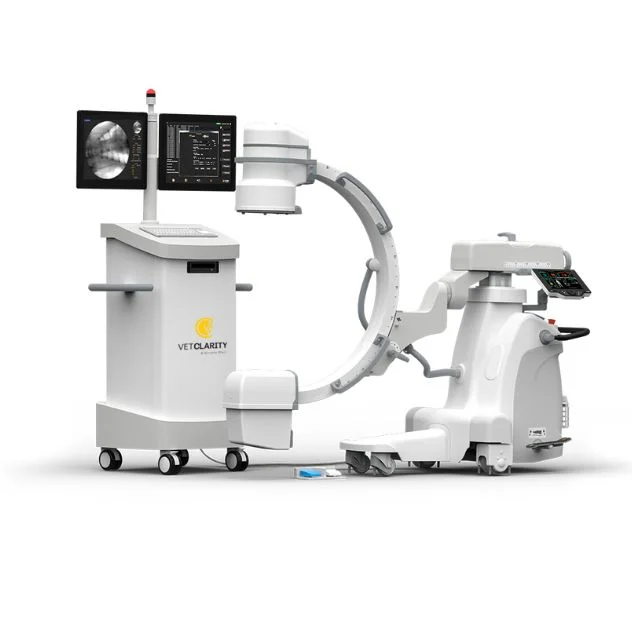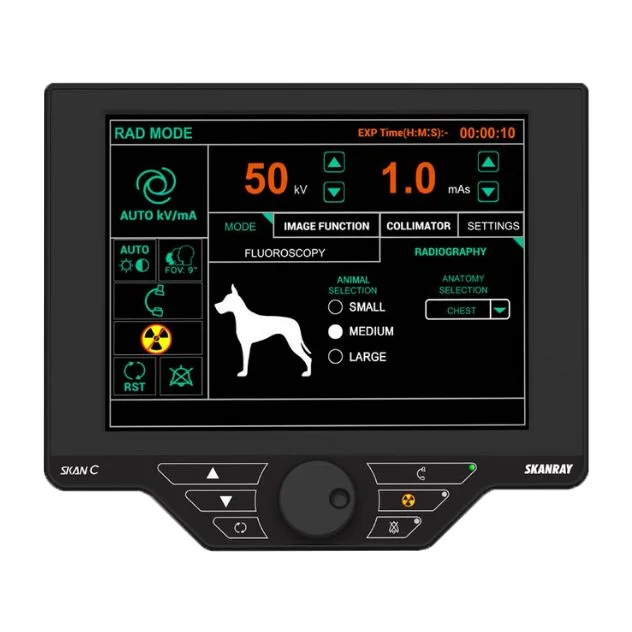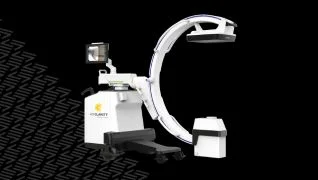
Built for Veterinary Caseloads
- Precise positioning: Low lateral height accommodates low height patient handling systems, while generous free space allows precise positioning in all dimensions
- Vet-first interface: The veterinary-specific graphical user interface (GUI) streamlines procedures, enabling efficiency.
- Handles the caseload: Stores over 100,000 images, eliminating the need for constant hard drive backup.
Vet-C has Safety Covered
Safety is built in through proprietary radiation shielding technology. The veterinary-specific interface streamlines study capture. With a low lateral height for user safety and precise patient positioning, Vet-C sets the standard for a mobile surgical C-Arm.

Features
The Vet-C is designed to be the safest C-Arm in its class with virtually zero leakage radiation. It’s designed to minimize dose exposure for veterinary professionals as well as to operate ergonomically.
- Proprietary radiation shielding technology: For low leakage radiation from the monoblock generator, enhanced by pulse fluoroscopy mode to reduce radiation exposure.
- Load Management: A unity power factor controller operates flawlessly within the range of 99 V – 254 V AC, delivering stable, high-quality imaging across a wide input voltage spectrum.
- Ergonomic Study Viewing: Thanks to effortless motorized vertical movements with fingertip controls, flexible monitor angles on a slim dual-monitor cart, and a counter-balanced C.
Our C-Arm Solutions
Mobile and full size options available
Looking for more VetClarity imaging solutions?
Explore the VetClarity Digital X-Ray and WebClarity Software
Why VetClarity Imaging?
We're continually innovating to help you achieve the best possible outcomes. Our imaging solutions are designed to support a wide range of applications, including:
- Diagnosis: Accurate and timely diagnosis of conditions.
- Surgical Planning: Detailed visualization for precise surgical procedures.
- Intraoperative Visualization: Real-time guidance during surgery.
- Minimally Invasive Approaches: Supporting less invasive procedures for improved patient recovery.
- Patient Aftercare: Monitoring patient progress and detecting potential complications.



